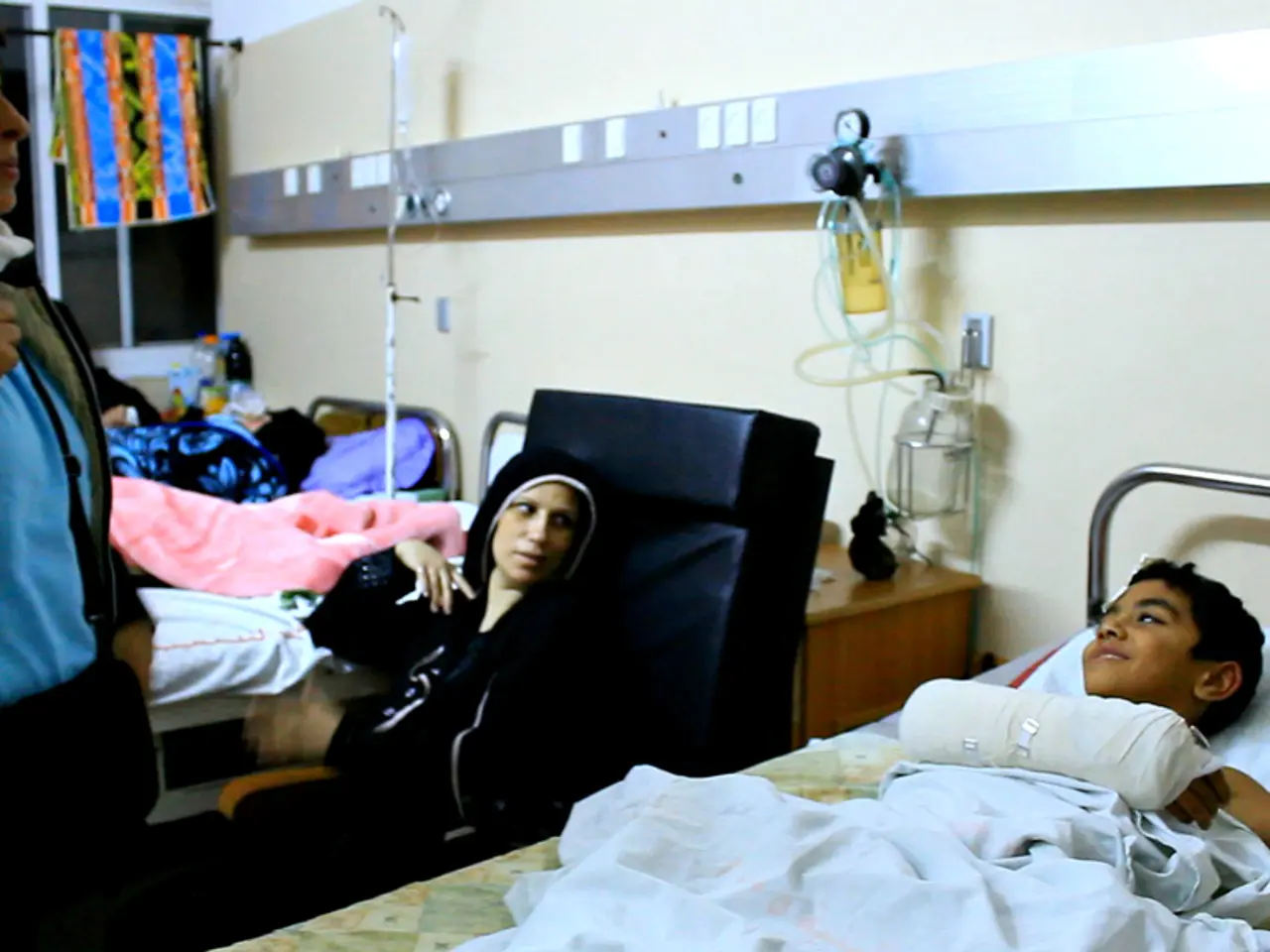Psychiatric Hospitals Unveiled: A Raw Look into the Institution's Reality
Inpatient psychiatric admission is a voluntary or involuntary process designed for individuals at risk of harm who are willing to seek help. This form of care is offered in hospitals across the United States and is split into units serving various populations, such as children, adolescents, men, women, and LGBTQIA+ units [1][2].
Upon admission to a psychiatric hospital, patients undergo a comprehensive evaluation that often involves an interview, lab work, and a physical examination in the emergency department. This initial assessment helps healthcare professionals understand the individual's needs and develop a personalised treatment plan [1].
A typical day in an inpatient psychiatric unit involves a highly structured routine, with wake-up calls, medication administration, and nutritious meals. Patients engage in a range of evidence-based therapies such as individual and group therapy, often using approaches like Cognitive Behavioral Therapy (CBT) and Dialectical Behavior Therapy (DBT), along with medication management overseen by psychiatrists [1][2].
The therapeutic milieu within these units fosters social skills and support, with both staff and peer interactions playing a significant role in treatment. Safety monitoring is continual, and multiple disciplinary team members collaborate on assessment, treatment planning, and discharge preparation to ensure continuity of care after leaving the unit [1][4].
Inpatient psychiatric treatment offers a safe environment with 24-hour monitoring by trained staff. The average stay for inpatient mental health care is between five and seven days, although this can vary depending on the individual's progress [3].
Patients typically have access to laundry facilities in their units, but there might be a need to schedule a time to do laundry. Showers are usually private but located in a locked area and available only during scheduled free time. Art supplies, board games, books, and puzzles are often available to patients to help them relax and engage in therapeutic activities [2].
It's important to note that coercive practices such as physical restraint, seclusion, and chemical restraint have been criticised for their impact on patient experience. Modern inpatient units strive to balance safety with trauma-informed, person-centered care, but challenges remain in creating an environment with compassionate staff-patient relationships [3].
Involuntary psychiatric care may be necessary if someone is at grave risk of harming themselves or someone else. The admission procedure may include paperwork, a safety search, and an admission interview. Items to consider bringing include about three days' worth of clothes, a current medication list, and personal items like toothbrush and deodorant [4].
The inpatient unit provides a safe environment and social support, which can be beneficial for mental health recovery. However, some people have reported feeling worse after inpatient treatment due to measures taken to ensure safety that may have aggravated their trauma or increased anxiety [4].
In conclusion, inpatient psychiatric care offers a structured, secure environment focused on stabilization and intensive treatment during acute mental health crises. By working closely with a multidisciplinary team, patients can expect to receive comprehensive care, including evidence-based therapies, medication management, and a focus on social skills and support [1][2][4].
References:
[1] National Institute of Mental Health. (2020). Inpatient Hospital Care for Mental Illness. Retrieved from https://www.nimh.nih.gov/health/topics/mental-health-treatment/inpatient-hospital-care-for-mental-illness/index.shtml
[2] Substance Abuse and Mental Health Services Administration. (2019). Inpatient Psychiatric Facilities. Retrieved from https://www.samhsa.gov/treatment/mental-disorders/inpatient-psychiatric-facilities
[3] American Psychological Association. (2019). Coercive Practices in Psychiatric Settings. Retrieved from https://www.apa.org/pi/disability/resources/coercion-practices
[4] Mayo Clinic. (2020). Hospital care for mental health disorders. Retrieved from https://www.mayoclinic.org/diseases-conditions/mental-illness/in-depth/hospital-care/art-20048041
In the process of personalized treatment planning, healthcare professionals may consider integrating evidence-based therapies such as science-backed mental health strategies, like Cognitive Behavioral Therapy (CBT) and Dialectical Behavior Therapy (DBT), that are crucial for health-and-wellness and mental-health recovery [1][2]. Learning coping skills through an inpatient psychiatric unit's therapeutic milieu can contribute significantly to managing various mental health challenges [4].




